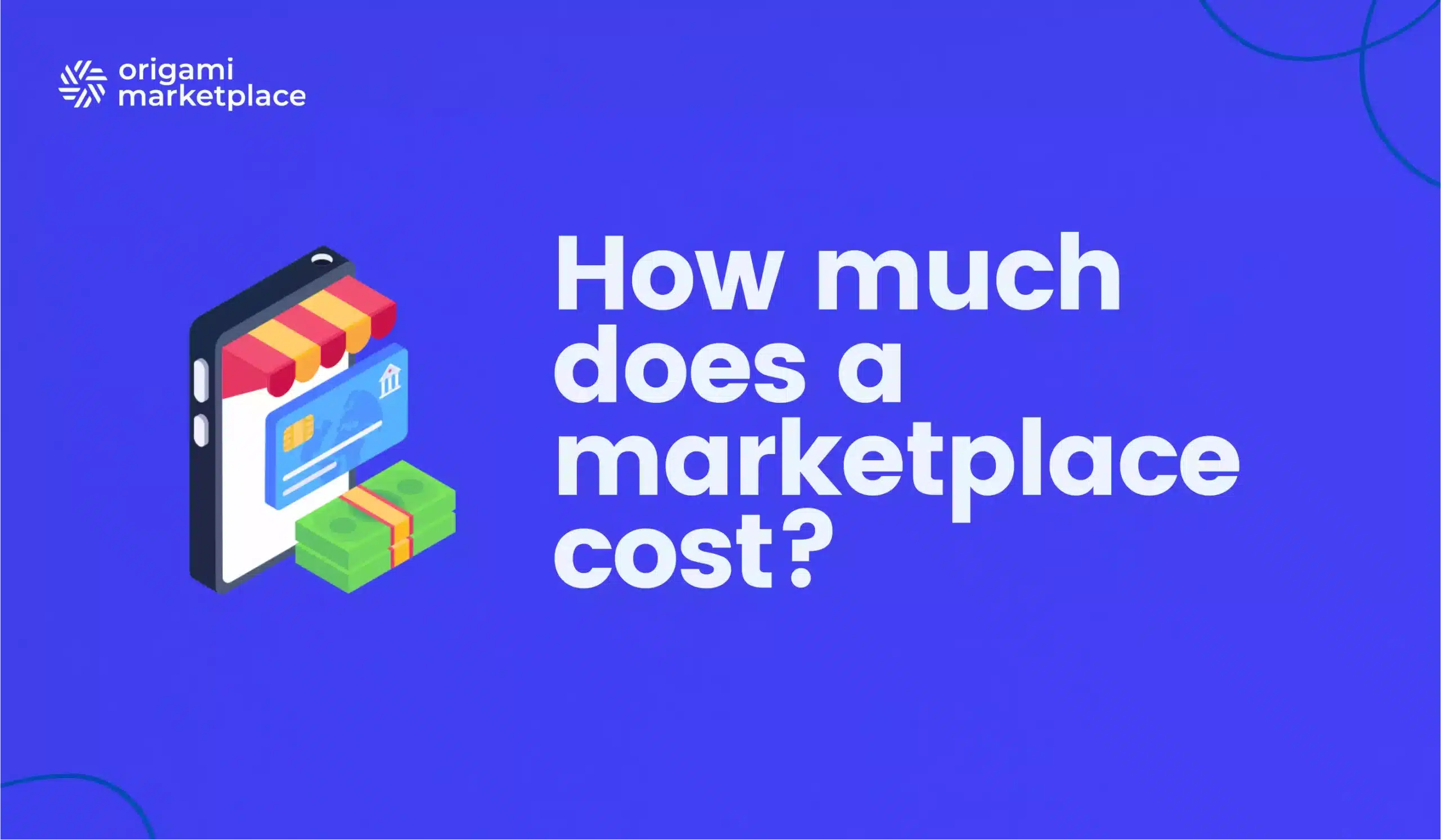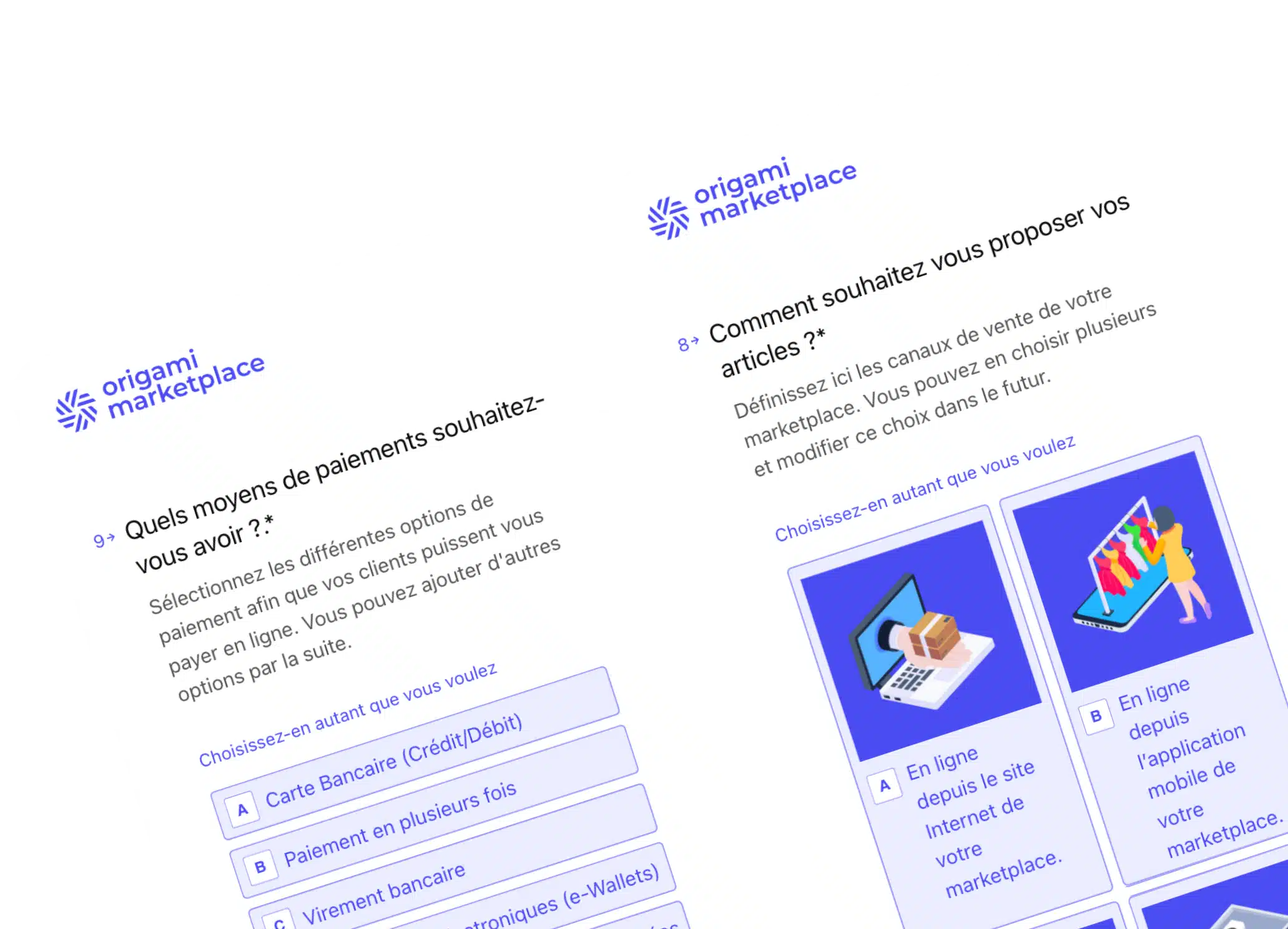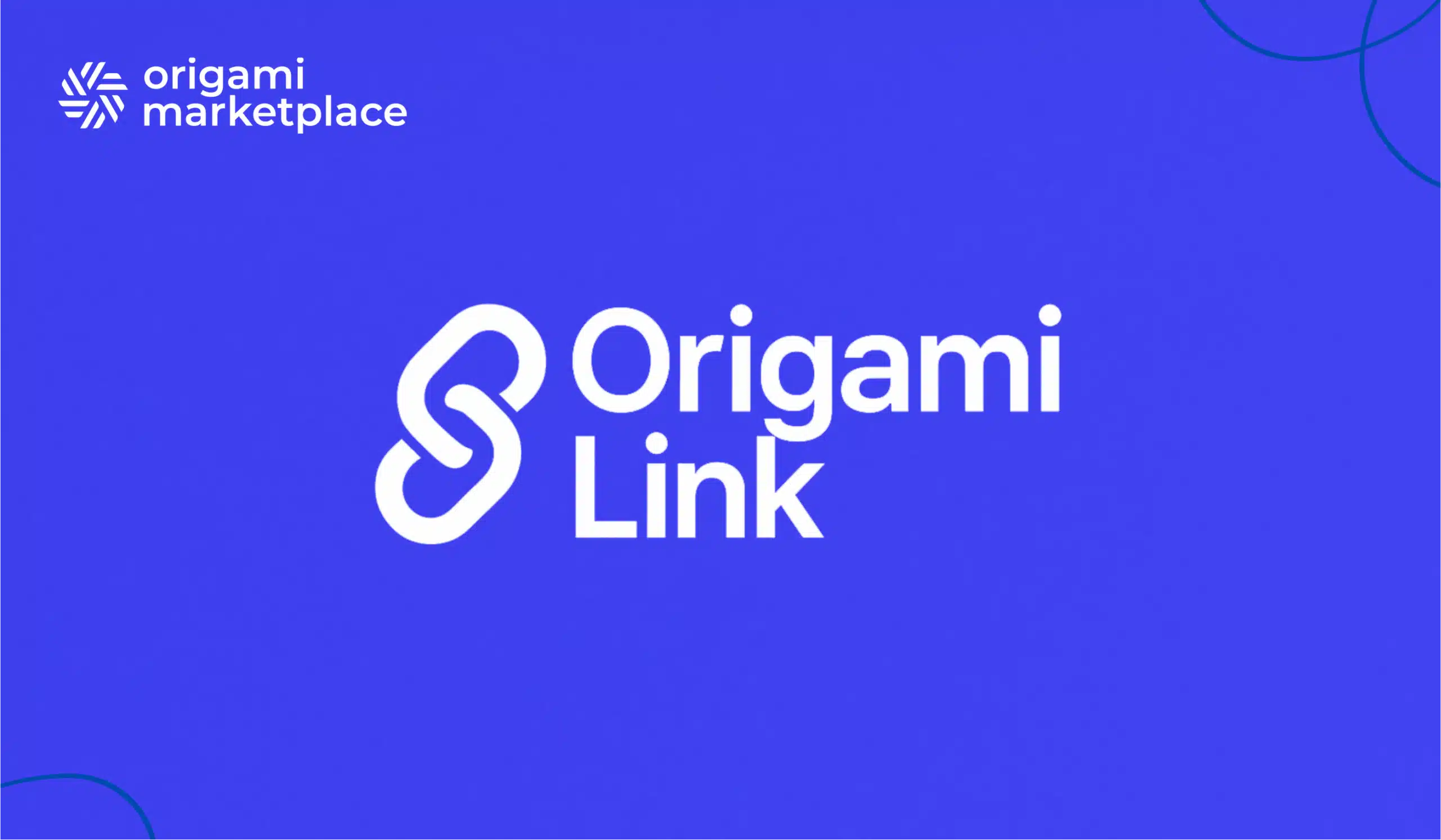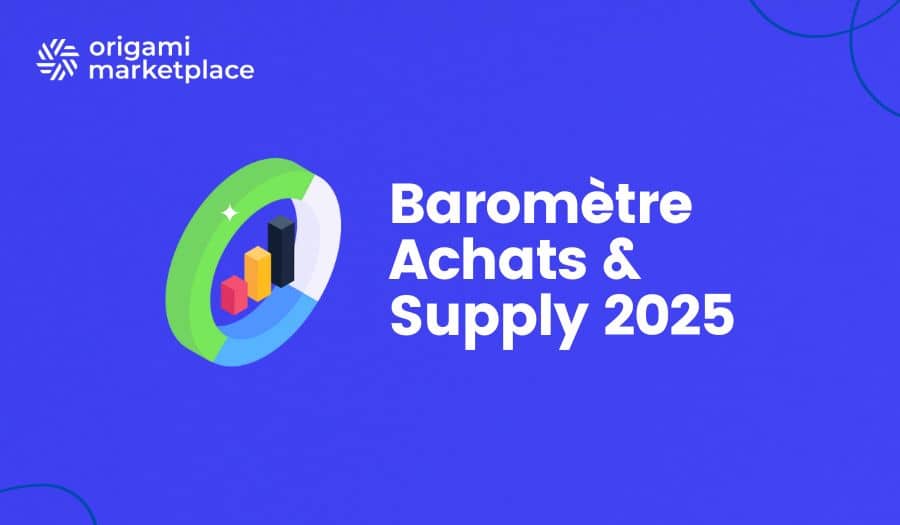How much does an online marketplace cost?
- Emeline Kerloch
- 4 minutes reading

Key points to understand online marketplace creation costs:
1. Design and strategic planning.
Custom design: In-house custom development.
- UX/UI design: Creating designs and conducting user testing to optimise the user interface can cost between €10,000 and €30,000.
- Feature analysis and planning: Identifying and planning key features such as seller, product, and transaction management can cost between €15,000 and €40,000.
- Community moderation and management: Developing systems for content moderation and community management can cost between €5,000 and €10,000.
- Integration of third-party tools: Planning the integration of payment tools, logistics, and other services requires a budget between €2,000 to €10,000.
- Scalability and technical architecture: Consulting to ensure scalability and select appropriate technologies costs between €5,000 and €20,000.
- Data analysis: Designing a data analysis system to maximise marketplace performance can require an investment of €5,000 to €15,000.
- Legal and compliance: Ensuring compliance with laws and regulations can cost between €5,000 and €10,000.
Estimated total cost of developing your own platform: from €50,000 to €150,000.
Download our free marketplace specifications template.
Here you will find all the essential features to succeed in your C2C, B2C or B2B multi-vendor marketplace. This model provides a simple backlog to guide you through each step of your project.
Online marketplace optimised design: SaaS solutions.
- UX/UI design: SaaS solutions provide UX/UI templates, reducing the need to develop from scratch. Costs for minor customisation or template adjustments can range from €1,000 to €5,000.
- Features, moderation, and data analysis: Most SaaS solutions include these features, eliminating additional costs.
- Integration of third-party tools and scalability: some specific integrations or customisations dedicated to marketplace scalability may incur costs, but the design portion is often provided as part of the subscription, reducing development costs.
2. How much does it cost to develop an online marketplace?
The development phase of a multi-vendor marketplace involves the transition from design to a working platform. This phase represents the largest portion of the total budget.
Custom development for maximum flexibility
Custom development offers maximum flexibility, but also involves significant costs and longer project development times.
- Feature development: Development of key features such as seller management, product management, transaction management, and payment systems can vary widely in complexity. Estimated cost: €60,000 to €300,000, depending on the average daily rate of your developers and the length of the project.
- Integration of third-party tools: Integration of payment systems, shipping management systems, CRM, etc. requires specific development, with an estimated cost of €20,000 to €100,000.
- Security and compliance: Ensuring that transactions are secure and compliant with regulations may require additional development with an estimated cost of €5,000 to €20,000.
- Testing and deployment: Testing to ensure the stability, performance, and security of the platform prior to deployment can also be a significant cost, estimated between €10,000 to €40,000.
Total estimated development costs: €85,000 to €410,000.
Development with a SaaS solution: efficiency and speed of delivery.
Choosing a SaaS solution significantly reduces development costs and complexity because most of the essential features are already built in.
- Feature customisation: Although basic features are included, specific customisations may be required.
Estimated cost: €1,000 to €10,000, depending on the amount of customisation required. - Integration of third-party tools: Some SaaS solutions may require additional costs to integrate specific tools that were not originally addressed.
Estimated cost: €500 to €30,000 (may be more in some cases). - Security and compliance: usually included in SaaS solutions, but industry or market-specific customisations may result in minimal costs.
- Testing and deployment: Costs are significantly reduced because the SaaS solution has already been tested. Integration and customisation testing may still be required.
Estimated cost: €1,000 to €5,000.
Estimated total cost of SaaS development: €2,500 to €40,000.
Team tips 🎓
Are you ready for the exciting adventure of creating a marketplace? A big decision! Our advice: start small, but think big. Focus on key features and test them with a small group of users. Use the feedback to fine-tune your platform before scaling. And don’t forget, a SaaS solution can save you time and reduce initial costs, so you can focus on what really matters: delivering an exceptional user experience and growing your community.
3. Legal management and compliance.
Multi-vendor marketplaces operating in an ever-changing regulatory environment must implement and manage a complex set of regulatory obligations. These include:
- Complying with privacy regulations.
- Managing contracts with sellers.
- Establishing clear and compliant terms of service.
With an in-house solution, the cost of legal management (legal advice, contract drafting, and compliance adjustments) can range from an initial €5,000 to $20,000, with ongoing costs to adapt the platform to regulatory changes. On the other hand, SaaS solutions often include built-in compliance frameworks, significantly reducing costs for online marketplace operators.
Estimated total cost for the legal part: €5,000 to €20,000 euros.
Ensure your success today. Use our free configurator to define the outline of your project and discuss it with one of our experts for a personal consultation.

4. Hosting and maintenance: costs and options.
The cost of hosting an online marketplace can vary considerably. For a custom-built infrastructure, costs can range from $1,000 to $3,000 per month, with potential increases depending on robustness and traffic requirements. Maintenance, which is essential to the security and efficiency of the platform, represents 10% to 20% of the initial development cost each year, adding a significant financial cost to in-house solutions.
SaaS solutions, where hosting and maintenance fees are often included in a monthly or annual subscription, offer predictable costs and reduced operational expenses. These platforms provide an enhanced and continually maintained infrastructure, including security updates and bug fixes, at no significant additional cost.
5. SaaS solutions: the cost-effective, strategic alternative.
SaaS solutions offer an interesting alternative for launching and managing an online marketplace, significantly reducing the cost and complexity associated with building a custom platform. Here’s a summary of the cost comparison between in-house approaches and SaaS solutions:
|
Costs
|
In-House
|
SaaS
|
|---|---|---|
|
Design
|
€50 000 - €150 000
|
€2 000 - €10 000
|
|
Development
|
€85 000 - €410 000
|
€2 500 - €40 000
|
|
Legal
|
€5 000 - €20 000
|
Included or minimal
|
|
Hosting
|
€1 000 - €2 000/month
|
€500 - €3 000/month
|
|
Maintenance (first year)
|
€13 200 - €109 000
|
≈ €50 000
|
|
Estimated total (first year)
|
€168 200 - €700 000
|
≈ €60,500 - €200,000
|
A quick summary of the cost of a marketplace
A comparative analysis of costs and features clearly shows that SaaS solutions are a more cost-effective way to launch an online marketplace. While custom development offers unlimited customisation, it also comes with significantly higher upfront and maintenance costs, increased complexity in day-to-day management, and compliance challenges. SaaS solutions, on the other hand, significantly reduce these costs, allowing entrepreneurs to focus on growing their business without being constrained by technical and financial issues.
With both predictable costs and out-of-the-box infrastructure, SaaS solutions make it easier for startups and businesses of all sizes to enter the market and compete successfully in the digital economy. Ultimately, the decision to build a custom solution or choose SaaS depends on a company’s specific goals, go-to-market strategy, and ability to invest.
However, for most companies looking to maximise operational efficiency while minimising costs, SaaS solutions offer a compelling and strategically attractive alternative.
👋 Future online marketplace operator!
Discover how the Origami Marketplace API and partner network can transform your business, regardless of size, with its innovative solution based on the marketplace model.



